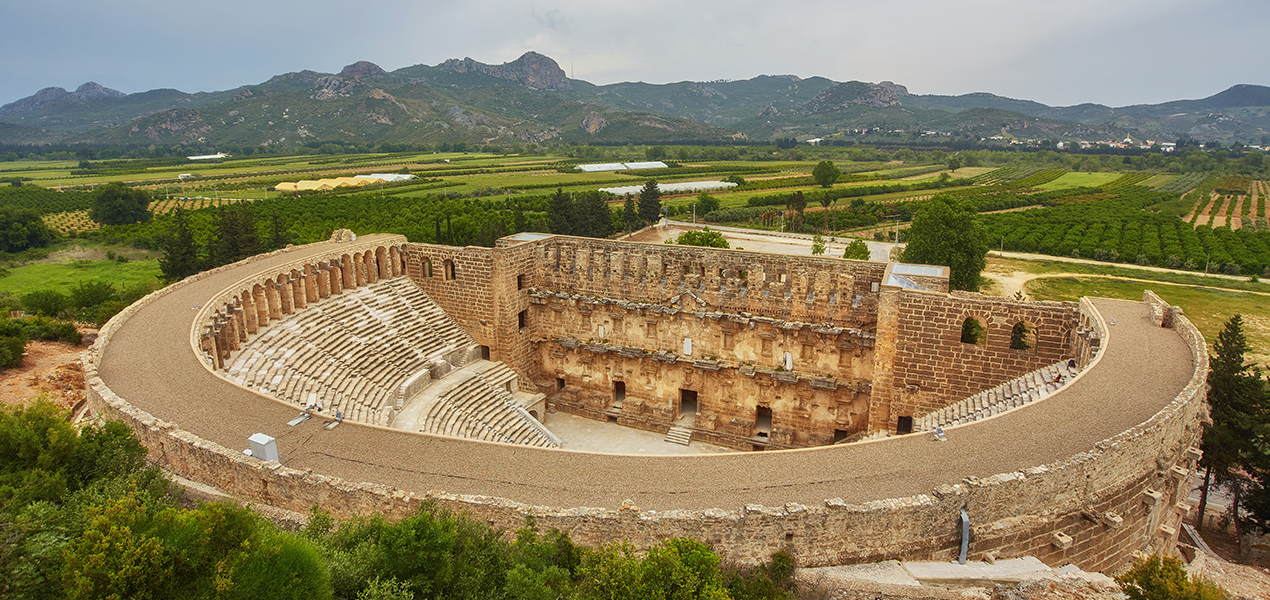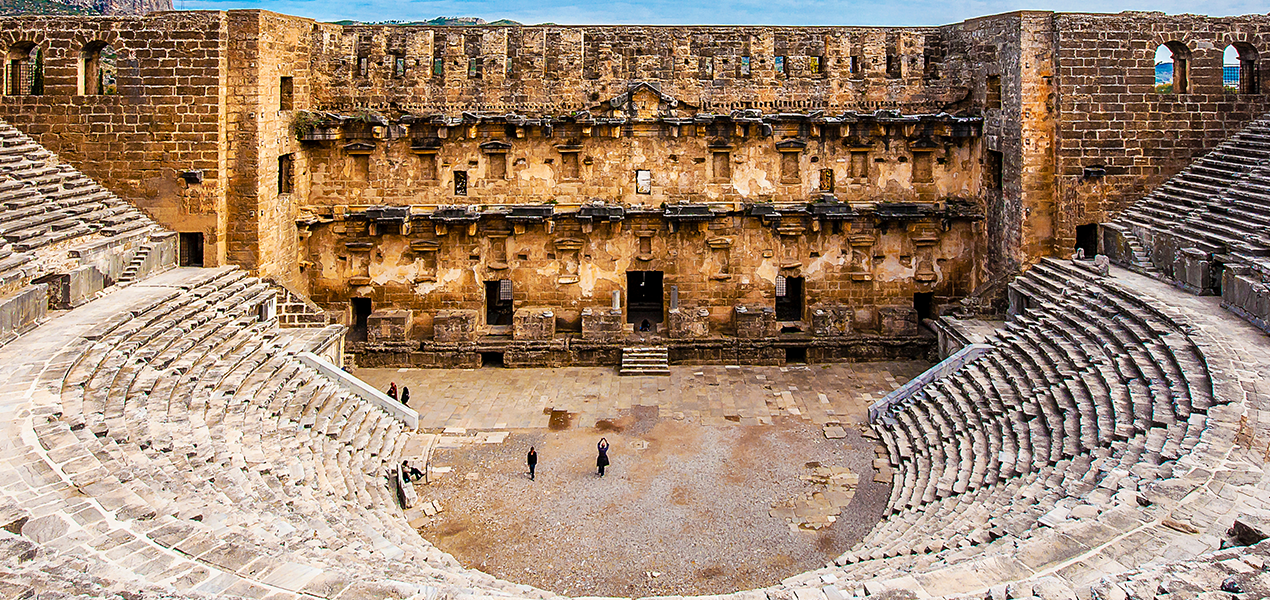Aspendos: A Magnificient Roman City
Antalya, located at the intersection of the Lycia, Pisidia, and Pamphylia regions, is a rare city where the remains of the ancient past can be witnessed in the present day.
As the capital of tourism, Antalya has become increasingly significant but when it comes to history and theatre, the name that immediately comes to mind is undoubtedly "Aspendos”.
Aspendos, one of the most important ancient cities of the Pamphylia region, is home to the Aspendos Ancient Theatre, which stands as the best-preserved theatre among all surviving ancient theatres from the Roman era with its remarkable architectural features and intact structure. Attracting a large number of local and foreign tourists each year, Aspendos Theatre is the most significant representative of Roman period theatres today. Situated near the Köprüçay River, Aspendos was one of the oldest and wealthiest settlements in the region.
A Fascinating Historical Site: Ancient Theatre of Aspendos:
The Ancient City of Aspendos still enchants and captivates with its well-preserved artifacts and ruins, shedding light on history even today. The most significant structure of the city is the Ancient Theatre of Aspendos , which embodies the finest characteristics of Roman theatre architecture. Dedicated to the emperors and gods of the time, this magnificent theatre has a seating capacity of 20,000 spectators. It was constructed by the architect Zenon, the son of Theodoros, during the reign of Emperor Marcus Aurelius. The theatre’s stage, being the oldest and most intact structure that has survived to our times, continues to host international opera and ballet festivals. Local and foreign visitors come to Aspendos every year to attend concerts and events held on its stage.
The Ancient Theatre of Aspendos, like many Roman theatres, is a two-tiered structure. The columns are arranged in the Ionic order on the lower level and the Corinthian order on the upper level. Particularly striking are the beautiful sculptures between the columns and the Dionysus relief made with floral motifs. The orchestra section, another characteristic feature of Roman theatres, is semi-circular in shape. The Cella Magistratur (Imperial Lodges) are located at the ends of the seating rows. The tiles and decorations left by the Anatolian Seljuks are among the factors that have preserved the theatre in its solid state to the present day.
The Ancient Theatre of Aspendos is the symbol of Aspendos with all its grandeur and is the most magnificent theatre with the best acoustics in the Mediterranean region. So much so that famous artists from every era come here to perform concerts, delivering magnificent performances accompanied by the extraordinary acoustics.
A historical city famous for the Legend of Belkis
Aspendos also has a memorable legend. The King of Aspendos wants to marry his beautiful daughter, Belkis. However, since he doesn't know whom to marry her off to, he organizes a competition among those who desire her hand. He declares that whoever does the most beneficial thing for the city will marry his daughter. Upon hearing this, two brothers who are both architects and wish to marry Belkis set to work. One of the brothers constructs an aqueduct to bring water into the city, while the other builds an ancient theatre. The acoustics of this ancient theatre are impeccable. The sound from the centre of the stage can be perfectly heard even by those sitting high above.
The king is initially impressed by the aqueduct and is inclined to give his daughter to the architect who built it. However, the other brother who doesn't want to lose Belkis whispers to the king "You should give your daughter to me" from the upper seats of the cavea section of the theatre. The king hears his voice and is deeply impressed by the architect who constructed the theatre. He becomes indecisive and according to one version of the legend, believing that both architects deserve his daughter, the king splits her in half with a sword and gives one half to each brother. In another version, the architect Zenon, who built the theatre, refuses to accept this and tells the king that he can give his daughter to the other architect without dividing her. Upon hearing this, the king decides that Zenon is the one who truly loves his daughter and gives her to him.
Ancient City of Aspendos, Heritage from the Roman Period
The water channels and aqueducts are also significant features that must be seen besides the theatre. Aspendos' water channels and aqueducts are among the best-preserved examples to date. These surviving aqueducts, stretching almost a kilometre, are a marvel of design as they slow down and balance the water coming from a distance through their siphons, effectively distributing it to the city. The main material used in the structures in Aspendos is conglomerate stone, which was readily available in the area. The basilica, agora, council building, monumental arch, street, monumental fountain, and Hellenistic temple, are among the other ancient ruins worth seeing in the city.



